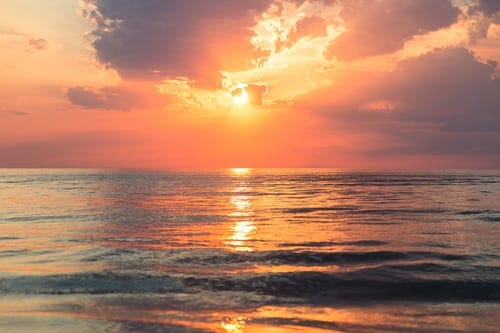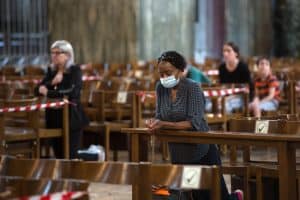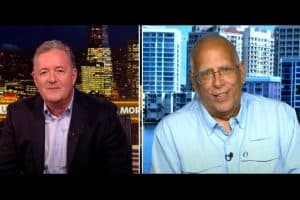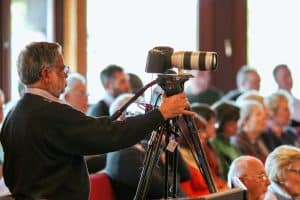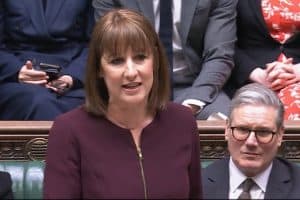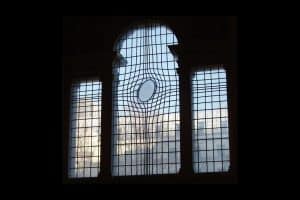By Andrew Brown
This year the coronavirus turned the religious world upside down as thoroughly as it tumbled the economy and even politics. The dominant factor for all the British faith groups was the pandemic and the loss of public worship.
Two groups were especially vulnerable to the virus at the start of the outbreak: Muslims, and ultra-Orthodox Jews. In both cases, the habits of collective worship in cramped surroundings provided perfect conditions for the virus to spread. And some Muslim groups, especially those of Pakistani ethnicity, tended also to live in multi-generational houses.
The result, by Office for National Statistics figures, was a death rate twice the white Christian average among both men and women (curiously, the group least vulnerable to the virus’s effects were atheists). Both groups, however, modified their practices in the direction of safety. Mosques introduced rigorous guidelines and social distancing rules; the ultra-Orthodox discovered that many of their communal prayers could be displaced to the gardens of their close-knit neighbourhoods.
This was in marked contrast to the experience of some countries: in New York, police were deployed to break up large, illegal ultra-Orthodox gatherings. The Israeli army undertook a similar role in Jerusalem. Iran, one of the few Muslim countries to publish halfway reliable statistics, recorded a very heavy toll from the virus.
Muslim communities in this country also suffered greatly from the economic effects of the virus. Many of their members had exactly the kind of insecure and low-status jobs that have been most at risk and by the end of the year, Muslim charities were discovering that mosques were running out of resources to help their struggling members.
The financial blow to all religious institutions that followed the ban on public worship seems to have been considerable. Cathedrals, which rely on tourism for a lot of their income, have been particularly hard hit. But those churches and places of worship that rely on raising money from their congregations have also suffered.
The Church of England is clearly going to shrink with the loss of churches and dioceses as a result. The diocese of Chelmsford has announced it is cutting the number of paid clergy posts; the diocese of Norwich is planning to shut churches; and the Bishop of Manchester has said that the church will have to work differently there. A central church body put out an extraordinary PowerPoint that focused on how to make a poorer church more effective.
Lockdown was accompanied by a large and apparently successful move into virtual worship. It was reported in June that a quarter of the English population had experimented with a virtual service, and that five per cent had started to pray regularly as they settled into lockdown. Less widely reported was the finding, from the same survey, that six per cent of the population had stopped praying over the same period.
It was reported in July that one man had converted to Catholicism because, while in the intensive care unit, he had mistaken his oxygen tank for a nun in her habit. The conversion continued even after the hallucination ceased.
One of the effects of the lockdown on the established church was to cut back sharply on the amount of volunteer work, just when it was most needed. So many of the most active members of any congregation are old enough to be in the groups most at risk. But for those who could volunteer, there was more work than ever. The Trussell Trust reported that the numbers of people using food banks had tripled compared with last year. One fifth of British households were now going into debt to pay their food bill, according the Paul Morrison, a trustee of the Trussell Trust.
Global religious stories
Outside the pandemic the largest global religious stories were China’s brutal persecution of the Uyghur Muslim minority, of whom a million or more are now held in concentration camps, and its crushing of the independence movement in Hong Kong (which was led largely by Christians). No Muslim countries protested formally to China about its treatment of the Uyghurs, although there was widespread outrage at French attempts to suppress resistance to its state doctrine of secularism.
In the United States, the most significant religious movement of the year was the rise of a hybrid form of charismatic and conspiratorial Christianity focused on the figure of Donald Trump as God’s anointed saviour of his country from demonic, paedophile Democrats and globalists. Originally identified with the QAnon movement, it has also spread to Catholic conservatives, led by Carlo Maria Viganò, the former Vatican ambassador to Washington.
Forty-eight of the 430 US Catholic bishops had expressed support for Viganò in 2018 when he called on Pope Francis to resign because he had supposedly rehabilitated and protected the disgraced sexual abuser Cardinal Theodore “Uncle Ted” McCarrick. It is unclear how many still do after the publication in November of an unprecedented 449-page report detailing the contents of the Vatican’s files on McCarrick, which showed conclusively that Viganò’s accusation was false. Viganò himself is now warning that the coronavirus vaccine is part of a plan for world domination hatched by, among others, Bill Gates; also that the Democratic Party is on the side of Satan in a literal sense.
Sex and scandal
The year brought the usual crop of sexual abuse scandals and Anglican contortions over homosexuality. The Independent Inquiry into Child Sexual Abuse reported on both the Church of England and the Roman Catholic Church in Britain. Both came in for harsh criticism. Cardinal Vincent Nichols, the Catholic Archbishop of Westminster, faced calls for his resignation for presiding over a sluggish bureaucracy largely indifferent to the sufferings of the victims. These were renewed when he was discovered to have sent for treatment a paedophile priest while he was Archbishop of Birmingham. For the moment, he remains in post.
John Sentamu, the first black archbishop in the Church of England, retired amid widespread expressions of regret and admiration, and was succeeded by Stephen Cottrell. Both men had been reported under the clergy discipline measure for safeguarding, and both were cleared. The Rev Jonathan Fletcher, an influential conservative evangelical and campaigner against homosexuality, was revealed to have taken naked saunas with male disciples. All in all, the Church of England faced 27 investigations into senior clergy, bishops, and cathedral deans — over historic safeguarding allegations. Among the subjects were Archbishop Justin Welby, who was cleared of an accusation that he had not followed correct safeguarding procedures; his predecessor Lord Carey, who is still being investigated over his role in the protection of the influential evangelical abuser John Smyth QC; and the Bishop of Lincoln, Christopher Lowson, who is also still being investigated although not even the bishop knows the detail of the charges against him.
There were calls to reform the clergy discipline measure as a result. The national church’s widely respected national safeguarding officer, Melissa Caslake, resigned unexpectedly after 18 months in the post to take up a role in local government.
After years of deliberation, the Church of England produced Living in Love and Faith, a set of study materials about human sexuality, urging deep and honest conversations on the subject. It was immediately denounced by conservative evangelicals, including some bishops who had been involved in the process.
Obituary
In November, the former Chief Rabbi, Lord Sacks, died from cancer aged 72, and was widely mourned. He was admired as a brilliant intellect and communicator, both inside and outside the Jewish community, bringing vision and generosity to political and religious leaders alike. His influence was global, through speaking and writing, and world leaders gathered to mourn his death and praise his life.

